Tide Pooling Log: Cinque Terre, West Coast of Italy
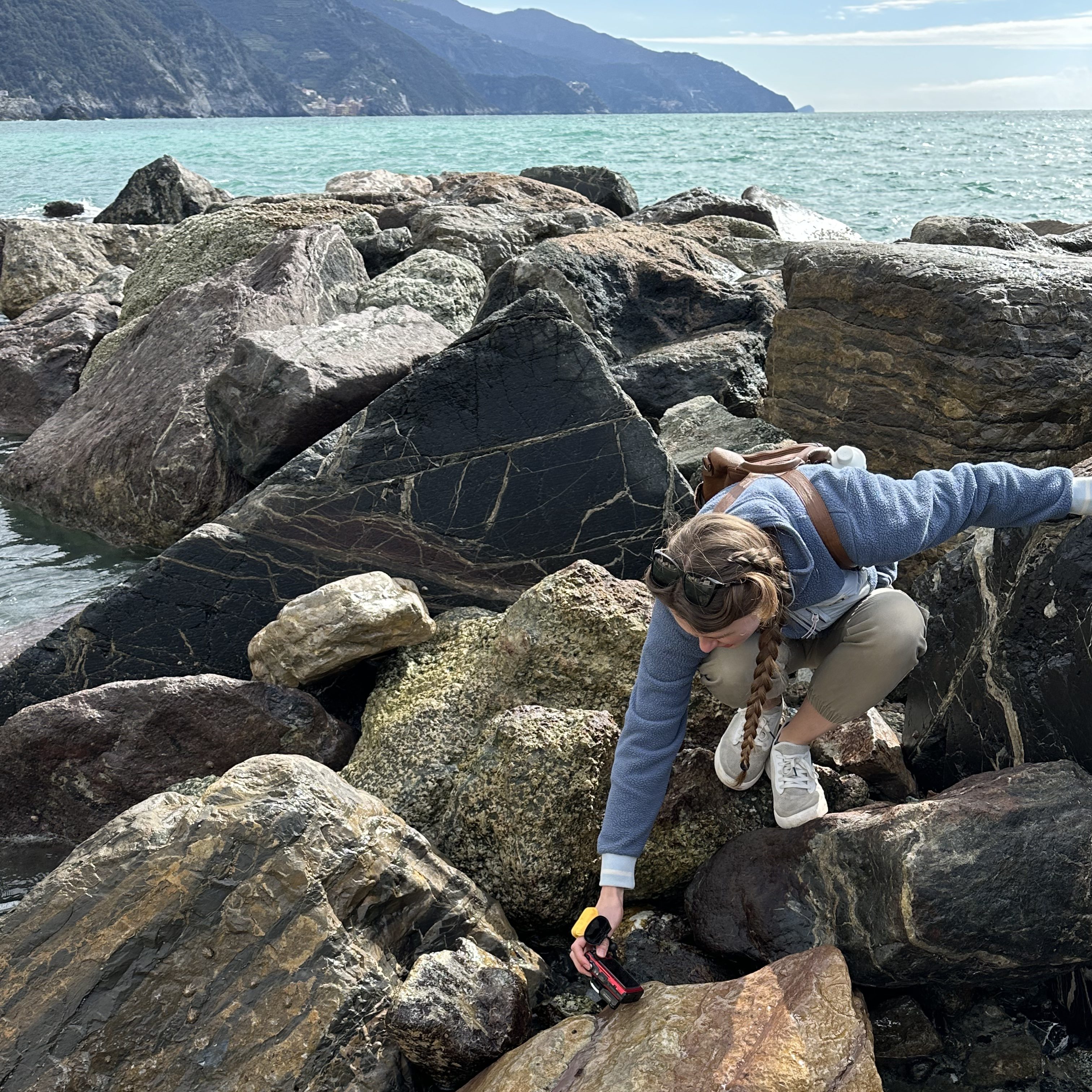
The Mediterranean is known as non-tidal as the tides of the Atlantic just barely squeeze a little water through the straight of Gibraltar before moving on. But on our trip to Italy this month, I was determined to see some intertidal animals. After doing some research and asking helpful friends on iNaturalist, I found a spot I thought had some life and made a point to visit.
I had visited the Cinque Terre before, one of Italy’s most famous national parks that includes five seaside villages nestled among hills of covered in vineyards and rich environmental and cultural history. We were going to visit two of the five towns and poke around at the coast in both of them. The tide was low, around 0.0ft, down from the typical 1.0ft or 1.5ft. Not a very large swing at all. But, I thought, surely there will be something to see.
Monterosso al Mare
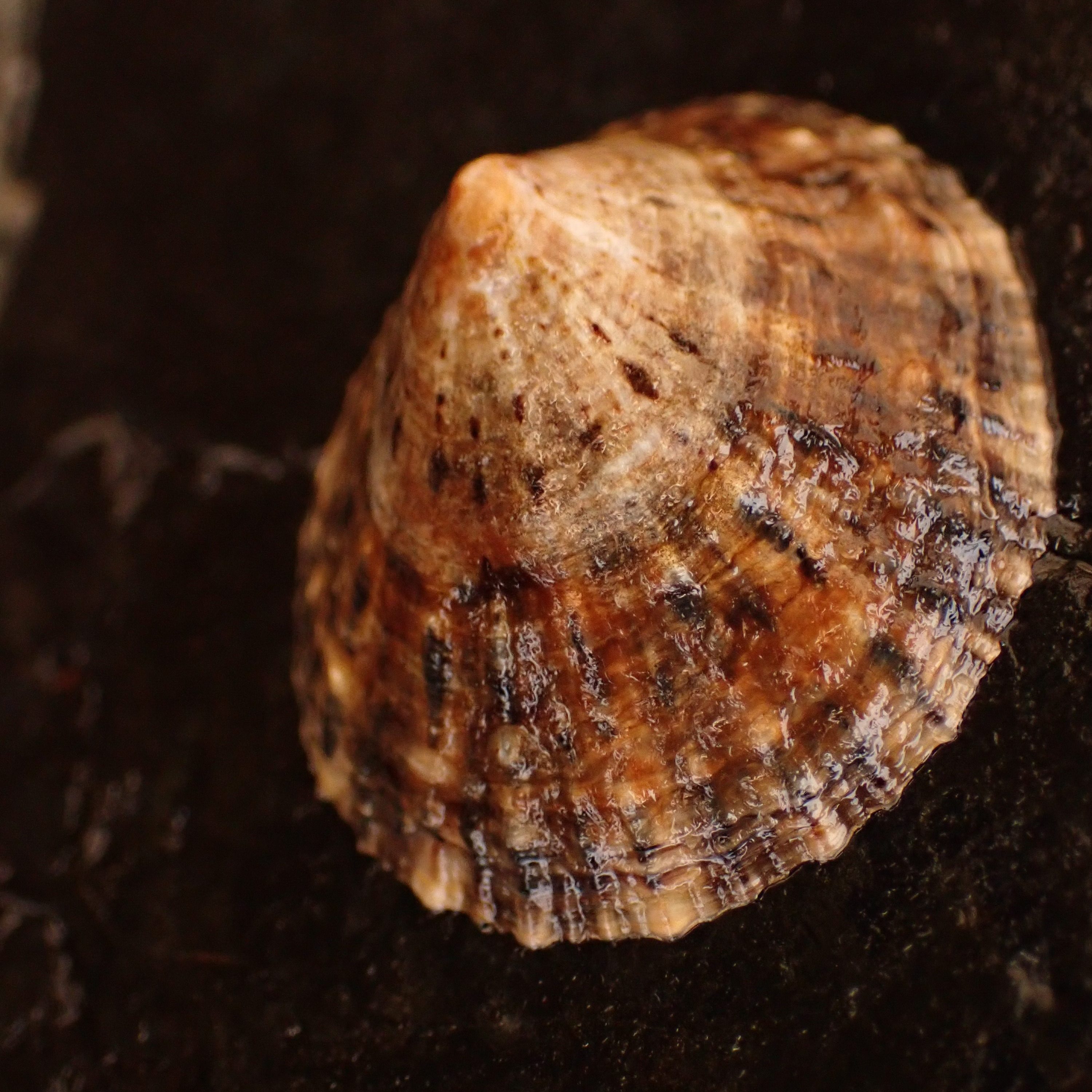
The first town we visited is the largest of the five: Monterosso al Mare. It is also the least protected from wave shock and has one of the only sandy beaches. Overall, the pickings here were disappointing. There were no protected areas with rocks for more delicate creatures to hide and even the small swells that lapped the jetties kept me from seeing anything that was submerged. Limpets, snails, and a shore crab or two that didn’t let me get close made up the life here.
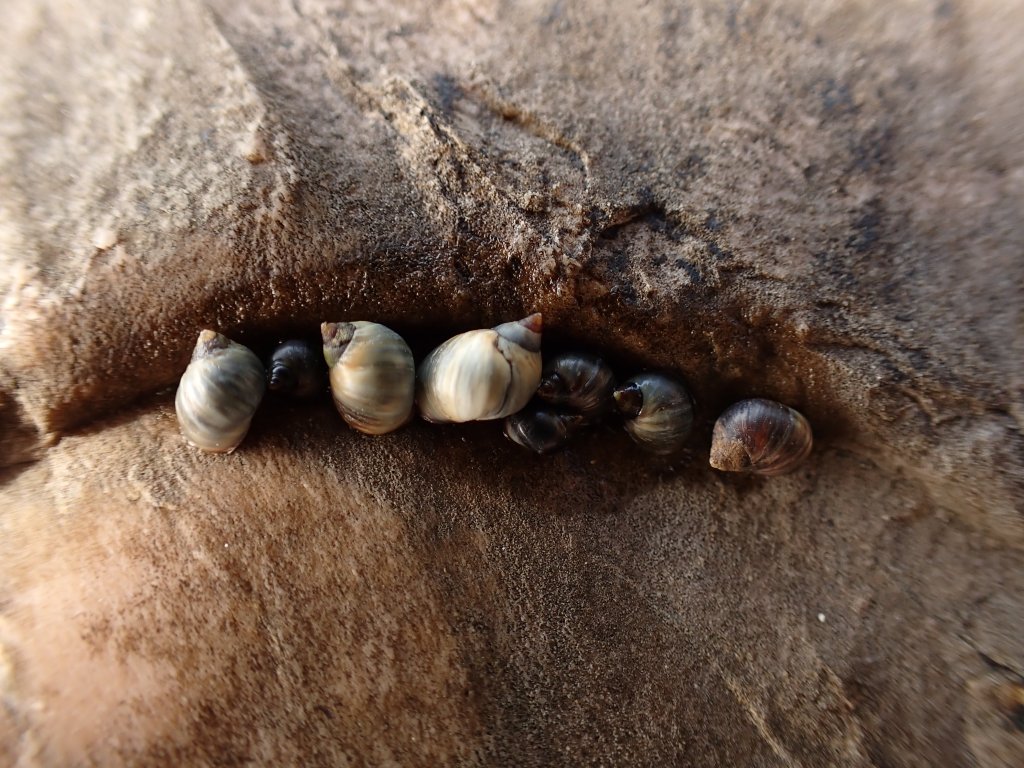
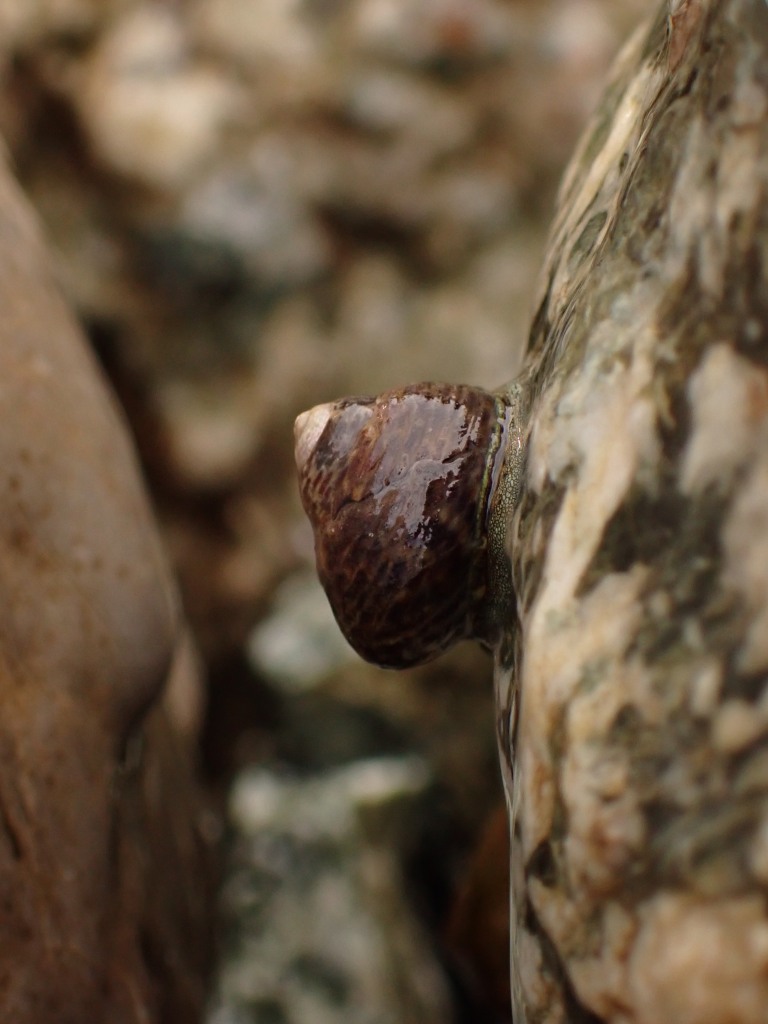
The most prominent snail was the small periwinkle (Melarhaphe neritoides), a prolific but important species that lives high in the intertidal. They were snuggled together in groups in nearly every crevice of the rocks, awaiting a higher tide or spray that would wet them again. The only larger snail I saw here was the Turbinate Monodont (Phorcus turbinatus) which belongs to the top snail family, another common intertidal sight here. Limpets in the genus Patella, mostly likely Mediterranean limpets, also abounded here in a variety of shapes and colors. This skittish Marbled Crab (Pachygrapsus marmoratus) below was the only one I saw and it didn’t let me get close.
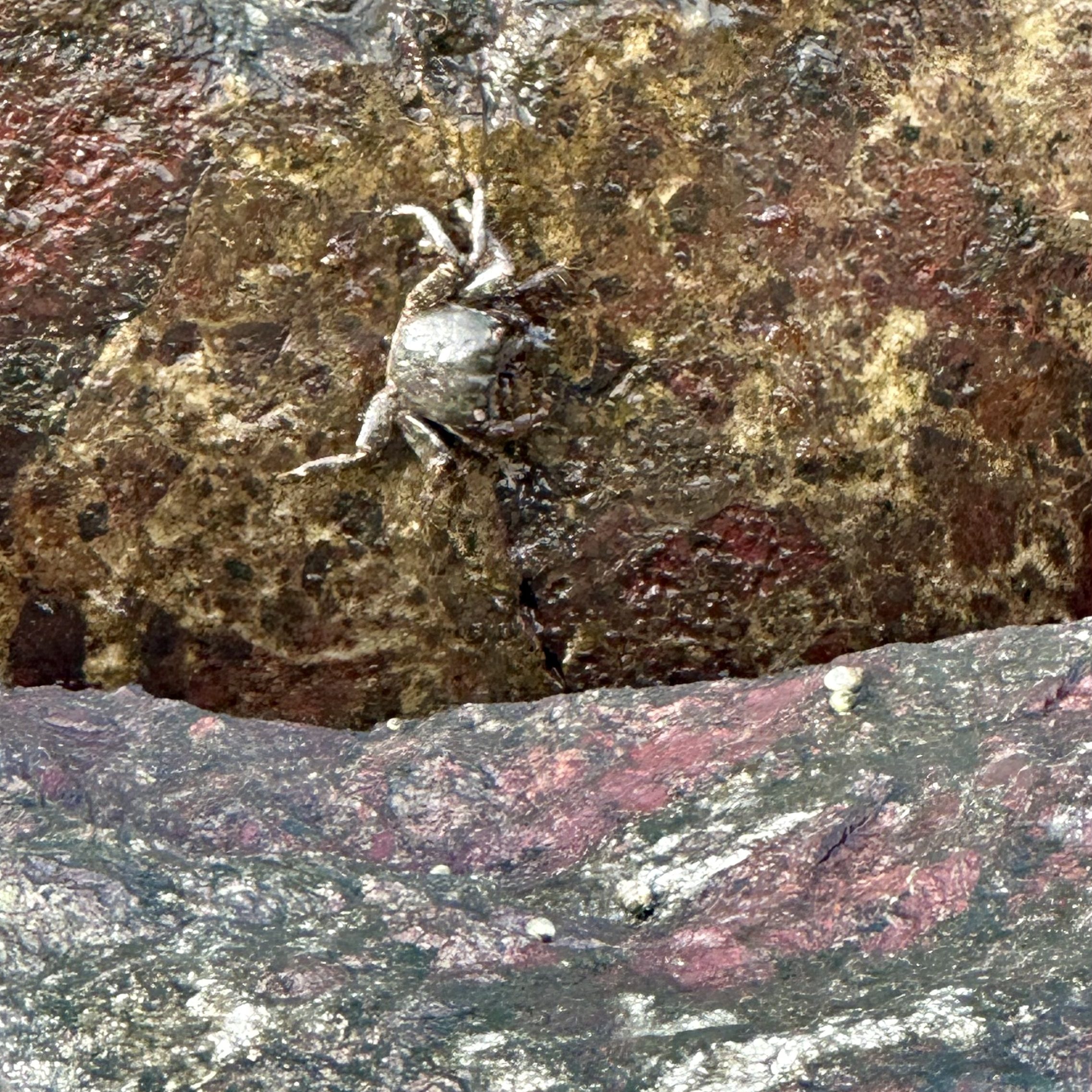
Vernazza
After the relatively disappointing finds and a delicious pizza lunch in Monterosso al Mare, we set out to hike the famous Blue Trail to the next town: Vernazza. With a semi-protected little harbor, this town offered better prospects for intertidal life, but the tide was coming in.
After a long hike, we went to the stone walkway that led to the calm harbor and soaked our feet. The large boulders that didn’t create tide pools but did provide a place for life to hide in still water. Despite the higher tide, there were still things to see.
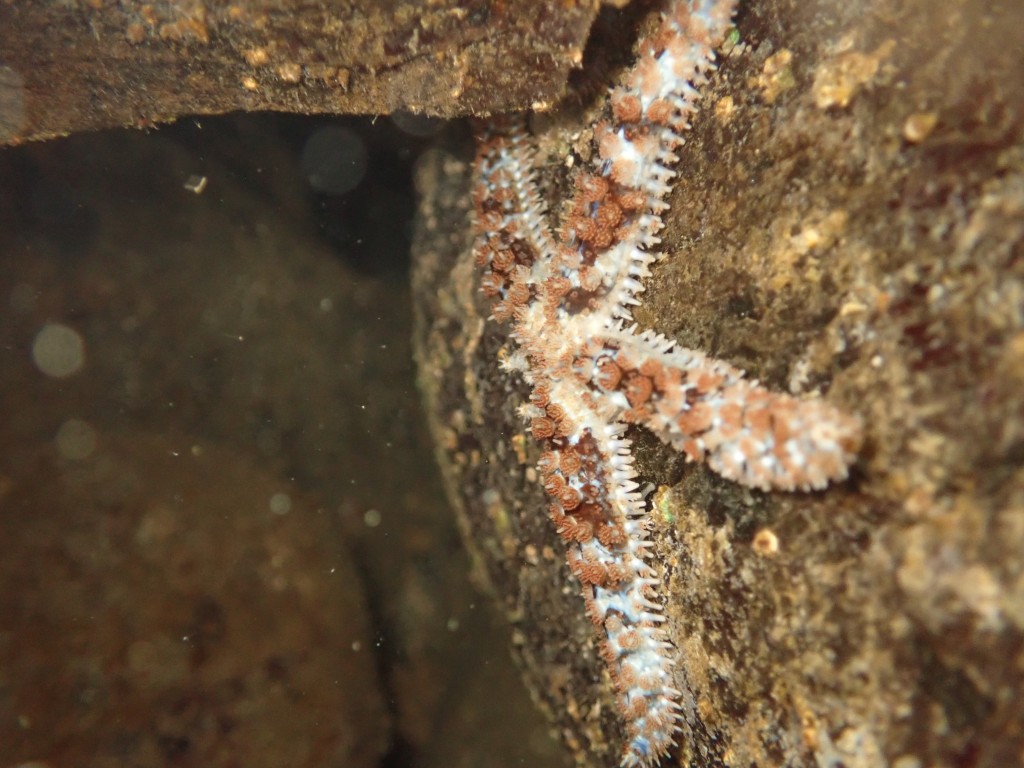
One of the few advantages of a small intertidal swing is that even a moderately low tide can reveal animals that would be considered low-intertidal elsewhere. Because they are not often exposed to air, you can find creatures less tolerant to drying out closer to shore on these beaches. Such was the case here. I hadn’t sat on the dry spot of this boulder for 15 seconds before I noticed this white sea star (Coscinasterias tenuispina) clinging to the side of a small rock. The common name of this species is a little misleading; it really should be called the tri-colored sea star with white, red, and flecks of blue between its short spines.

The next creatures I noticed were the hermit crabs, hundreds of them. I could only ID a few from photos as Saint Piran’s hermit crabs (Clibanarius erythropus), but most of them were probably this species. Where the higher wave action of the rocks at Monterosso had excluded these small crabs, the gentle breathing of the water here was perfect for them. In a variety of shells whose original snail species I didn’t recognize, the hermits stood out with their wobbly walk and striking black and white eyes.
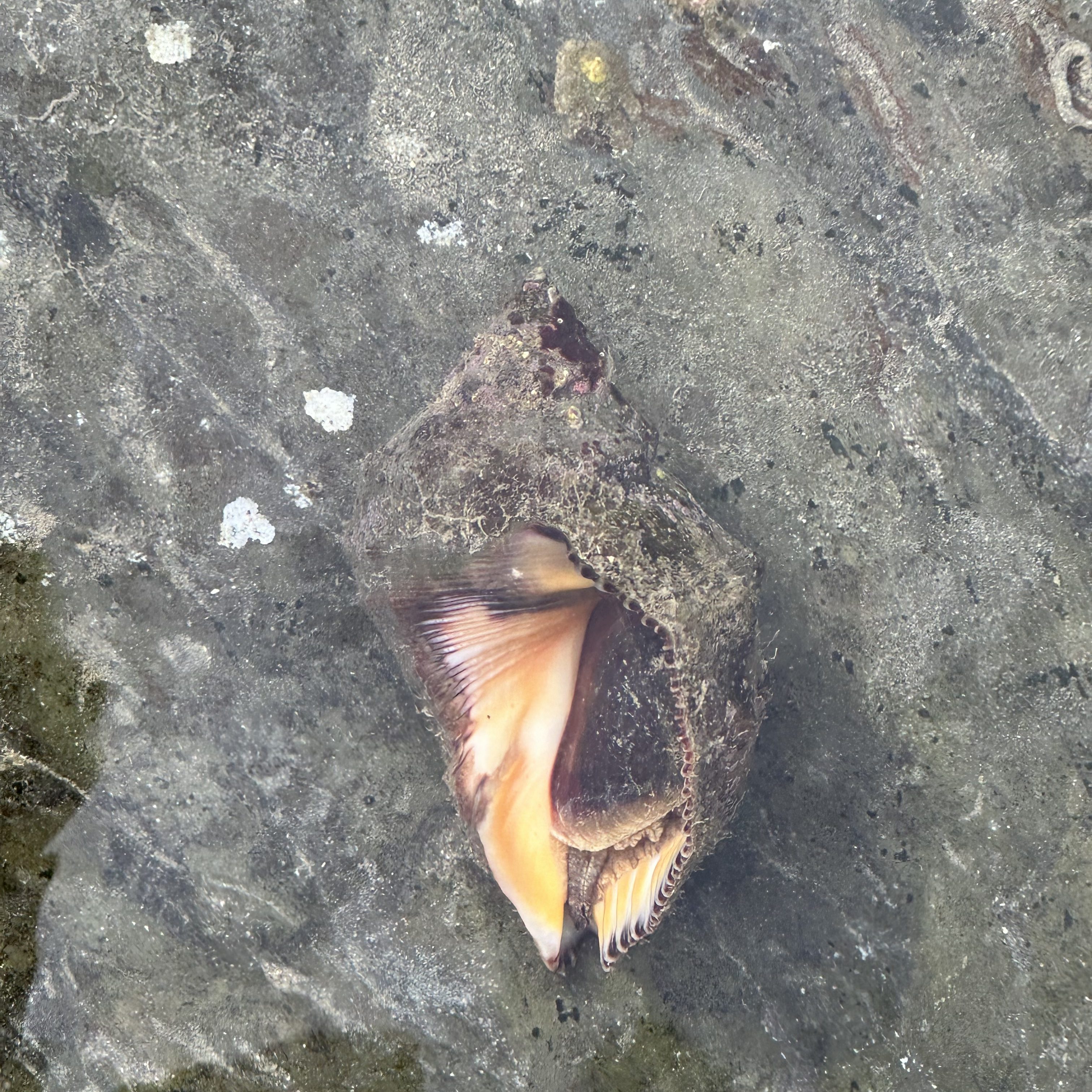
There were still limpets and snails here, although fewer small periwinkles. We did get to see the above red-mouthed Dog Winkle (Stramonita haemastoma) that had become detached from the rock. After photographing it, we put it in a place where it was less likely to be pushed around by the waves.
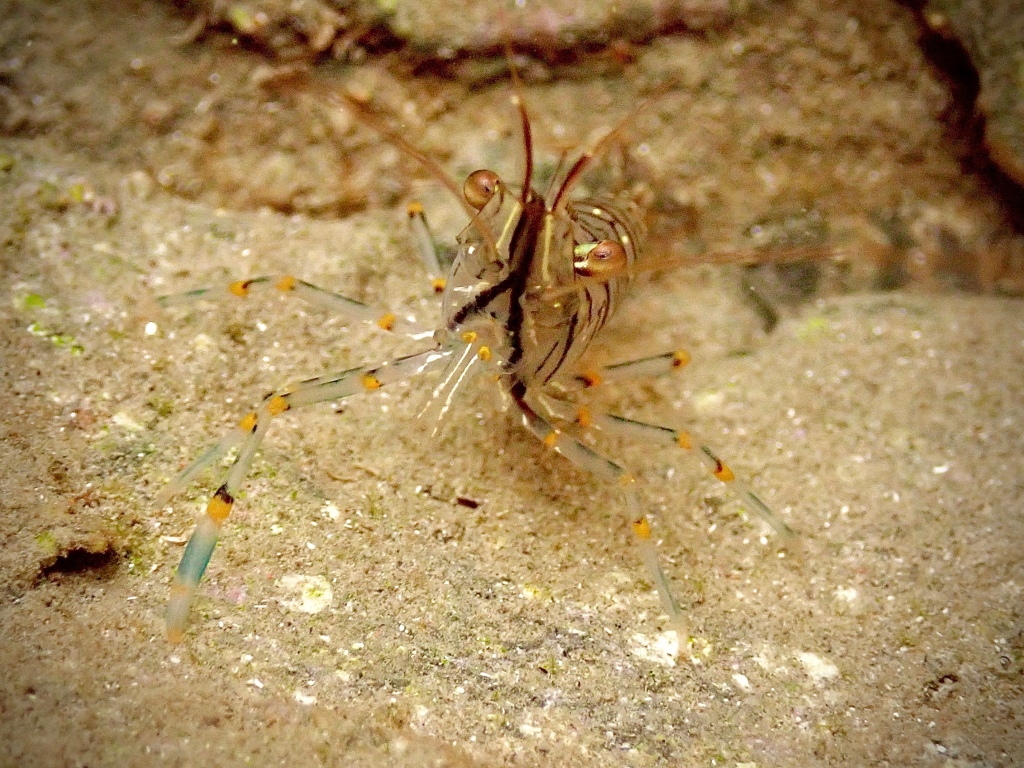
Perhaps the most fun of all the creatures I saw were the ones I almost missed. Masters of camouflage with their transparent bodies striped in yellow, blue, and black. The rockpool prawn (Palaemon elegans) is very similar to our red banded transparent shrimp (Heptacarpus sitchensis) but somehow I didn’t notice them at first. When I spotted my first one, I took a dozen photos before I realized there were 2, 3, 6, a dozen all around the first one. Once I had an imprint image in my brain, they seemed to materialize out of nothingness. Despite their abundance, they are incredibly beautiful and very entertaining to watch.
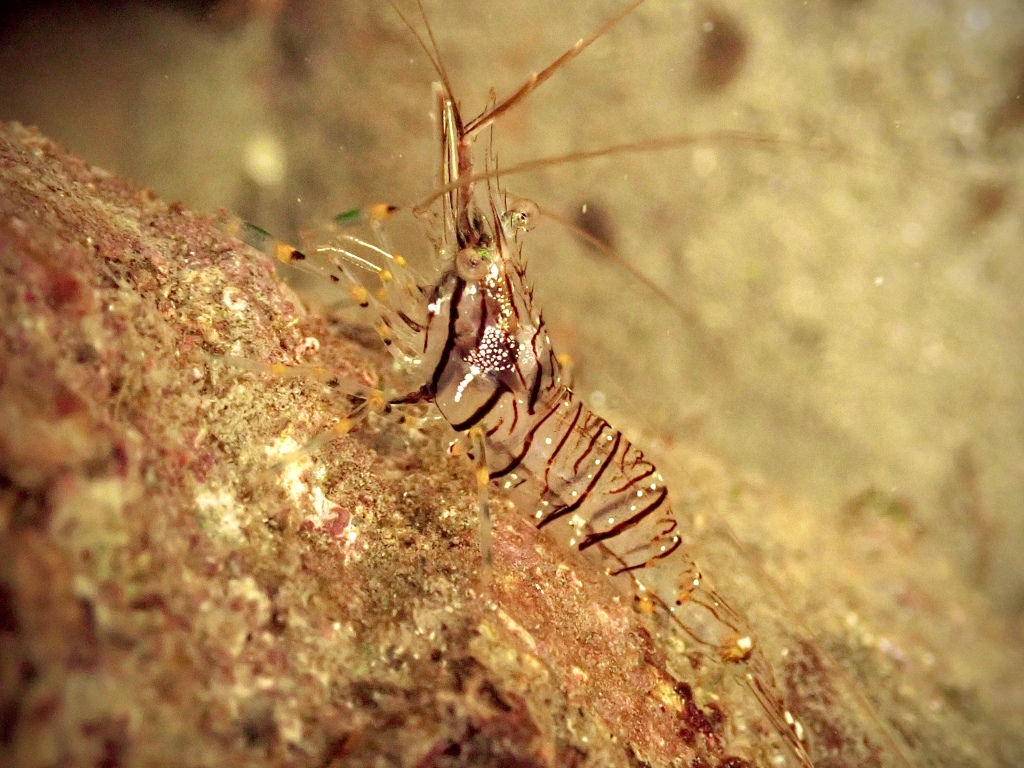
While not the abundance of life on our rocky shores in California with major tidal swings and zones, these few animals still made my day on the west coast of Italy.

Categories
tags
Subscribe to the blog
Sign up to receive weekly emails with tide pooling information and guides so you never miss a post!
More like this

Categories
tags
Subscribe to the blog
Sign up to receive weekly emails with tide pooling information and guides so you never miss a post!
More like this

Categories
tags
Subscribe to the blog
Sign up to receive weekly emails with tide pooling information and guides so you never miss a post!

Leave a comment